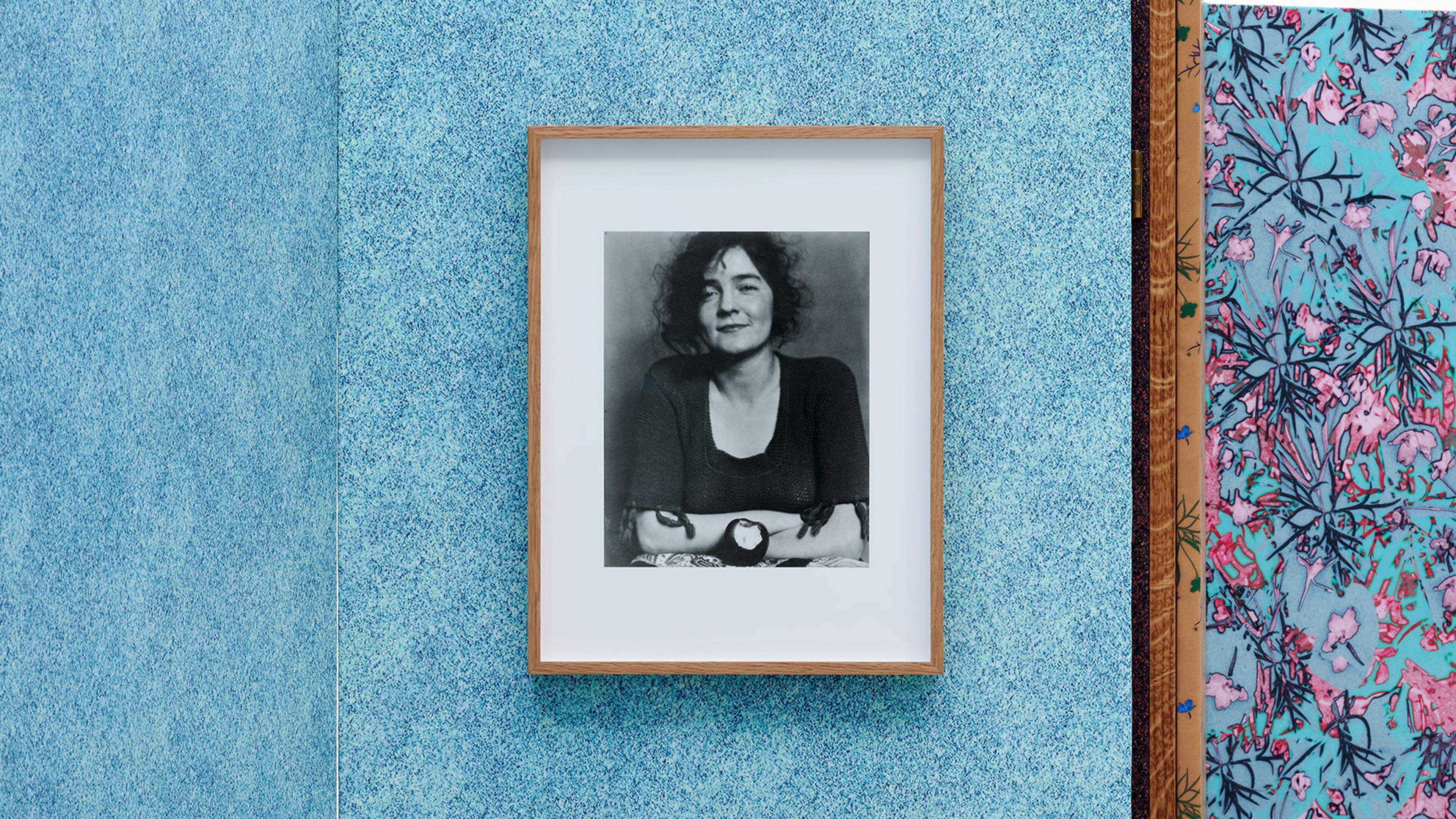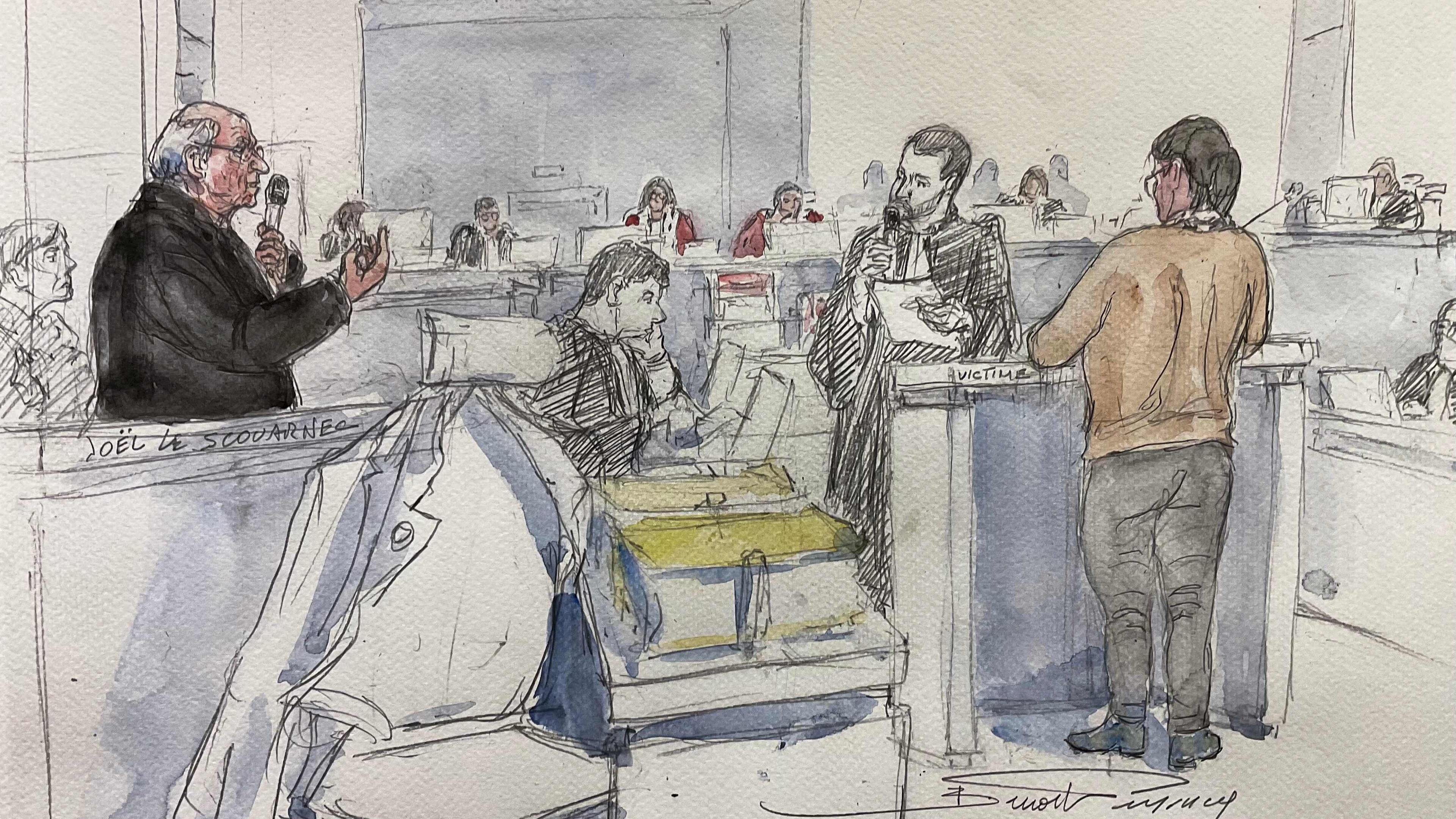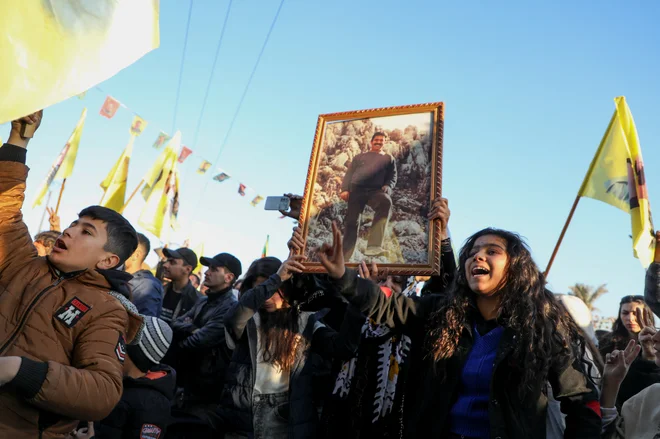Edward Steichen is different: Lisa Oppenheim im Mudam

Anyone who enters the small pavilion of the Mudam does not necessarily catch up on the walls these days; Like the paravent-like objects in the middle of the room, it can be seen as such at first glance. But what about the bouquet of flowers that sits in a vase at the stairway?
The bouquet, a compilation of different flowers and leaf elements, seems to have already had its best days behind. But that is wanted, because the floral arrangement is art – designed by artist Lisa Oppenheim in collaboration with the interior designer and flower specialist Camille Schmitt. It was basically left to itself. The transience of the flowers is illustrated by the object. An impermanence that can only be transmitted to a limited extent.
With the floral object « Bouquet of Flowers (A Photographic Score) 1940/2025 » (2025), Lisa Oppenheim awakens a bar motif. Photo: Mudam
Artificial intelligence provides ideas
A photography of Edward Steichen from 1940 served as the basis for flower composition: « Bouquet of Flowers », created in Dye Transfer technology (a printing process for creating color images from diapositive or negative using color filters). Parts of the bouquet of flowers appear black, other components, especially the flowers in the center of the composition, are highlighted with strong colors, in red and magenta.
Lisa Oppenheim, who was commissioned, the work of Edward Steichen (1879-1973) More precisely to devote it, shows at the upper floor of the pavilion works in the Dye Transfer technology used by stars in the 1930s and 1940s in connection with artificial intelligence: motif-and at the same time the title of the exhibition-is a « Monsieur Steichen » type that a hobby botanist from France in 1910 created in honor of the artist from Luxembourg.
Sard was, which many do not know given their most famous recordings, a flower and nature lover. Even as a plant breeder, he is said to have pressed himself. He also achieved a direct connection between art and botany with the flowers on display.
The American born in 1975 Lisa Oppenheim, who uses photography and film, among other things, brings the breeding plant or rather a possible image of it back to the present, implemented in various color variants. Which plant or conceived illustration comes closest to the original remains open.
Whether the women who shaped stands who had liked flower arrangements and floral designs? Probably already.
The middle of the room take on both floors of the pavilion – a series of “Studies” from Oppenheim can also be seen in the lower part – fabric -related paravents. Here the New York artist shows motifs inspired by the textile designs created by stars in the 1920s for the US company Stehli Silks. In doing so, it does not take up any of the designs that made it into production, but rather eight rejected motifs with floral and natural elements.
Art or even decoration?
Attached to wooden panels, the textile fabrics that Oppenheim designed together with fashion designer Zoe Latta are reminiscent of wallpapers. If it were not an insult to every artist, you could even call them decorative. This impression increases by the elements that make living elements or even walls out of the fabric railways: deductions of bars photographs that were attached to it.
The motives come from the artist's family album: The photographs show his daughter Mary (1904-1998) with her mother Clara (1875-1952), Dana Desboro Glover (1894-1957), his second wife, which he married in 1923, a year after the portrait recording, his third wife Joanna (1933-2010), which he married in 1960 at the age of 80, and his mother. Whether the women who shaped stands who had liked flower arrangements and floral designs? Probably already.
Diane Jodes inspires with her humorous print graphics
The visitors to the « Monsieur Steichen » show can still enjoy the floral compositions of Lisa Oppenheim until August 24, who show the Steichen work through the eyes of an artist born around 100 years after him.
In June and July, at least curator Christophe Gallois and the artist promise, the show is supplemented by a flowering object outside the museum walls: an installation of a knight's spur, called « Eduard's Garden », will then also raise the fortress ditch to the art space.








